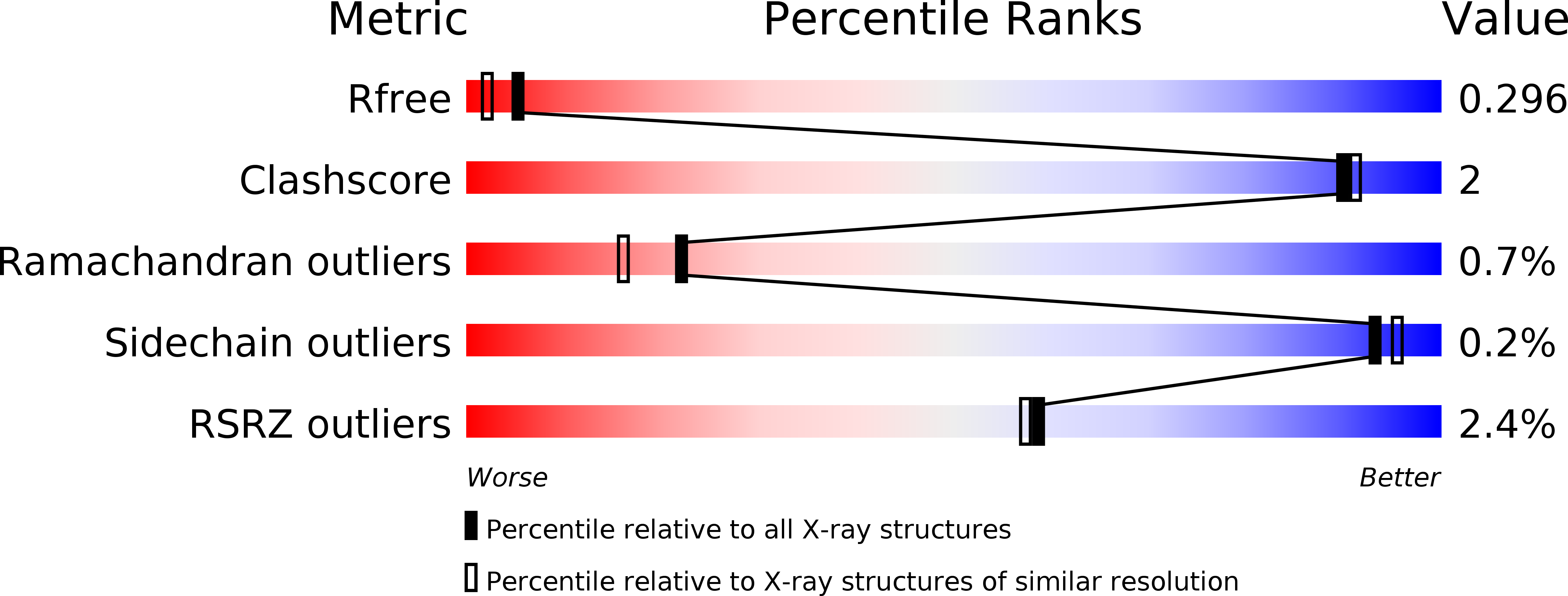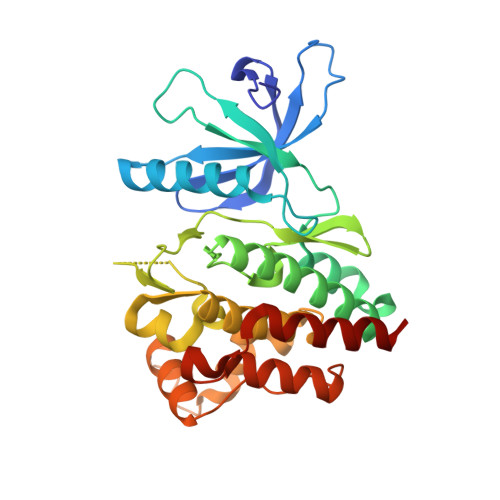Development, Optimization, and Structure-Activity Relationships of Covalent-Reversible JAK3 Inhibitors Based on a Tricyclic Imidazo[5,4- d]pyrrolo[2,3- b]pyridine Scaffold.
Forster, M., Chaikuad, A., Dimitrov, T., Doring, E., Holstein, J., Berger, B.T., Gehringer, M., Ghoreschi, K., Muller, S., Knapp, S., Laufer, S.A.(2018) J Med Chem 61: 5350-5366
- PubMed: 29852068
- DOI: https://doi.org/10.1021/acs.jmedchem.8b00571
- Primary Citation of Related Structures:
6GL9, 6GLA, 6GLB - PubMed Abstract:
Janus kinases are major drivers of immune signaling and have been the focus of anti-inflammatory drug discovery for more than a decade. Because of the invariable colocalization of JAK1 and JAK3 at cytokine receptors, the question if selective JAK3 inhibition is sufficient to effectively block downstream signaling has been highly controversial. Recently, we discovered the covalent-reversible JAK3 inhibitor FM-381 (23) featuring high isoform and kinome selectivity. Crystallography revealed that this inhibitor induces an unprecedented binding pocket by interactions of a nitrile substituent with arginine residues in JAK3. Herein, we describe detailed structure-activity relationships necessary for induction of the arginine pocket and the impact of this structural change on potency, isoform selectivity, and efficacy in cellular models. Furthermore, we evaluated the stability of this novel inhibitor class in in vitro metabolic assays and were able to demonstrate an adequate stability of key compound 23 for in vivo use.
Organizational Affiliation:
Department of Pharmaceutical/Medicinal Chemistry , Eberhard Karls University Tübingen , Auf der Morgenstelle 8 , 72076 Tübingen , DE , Germany.

















